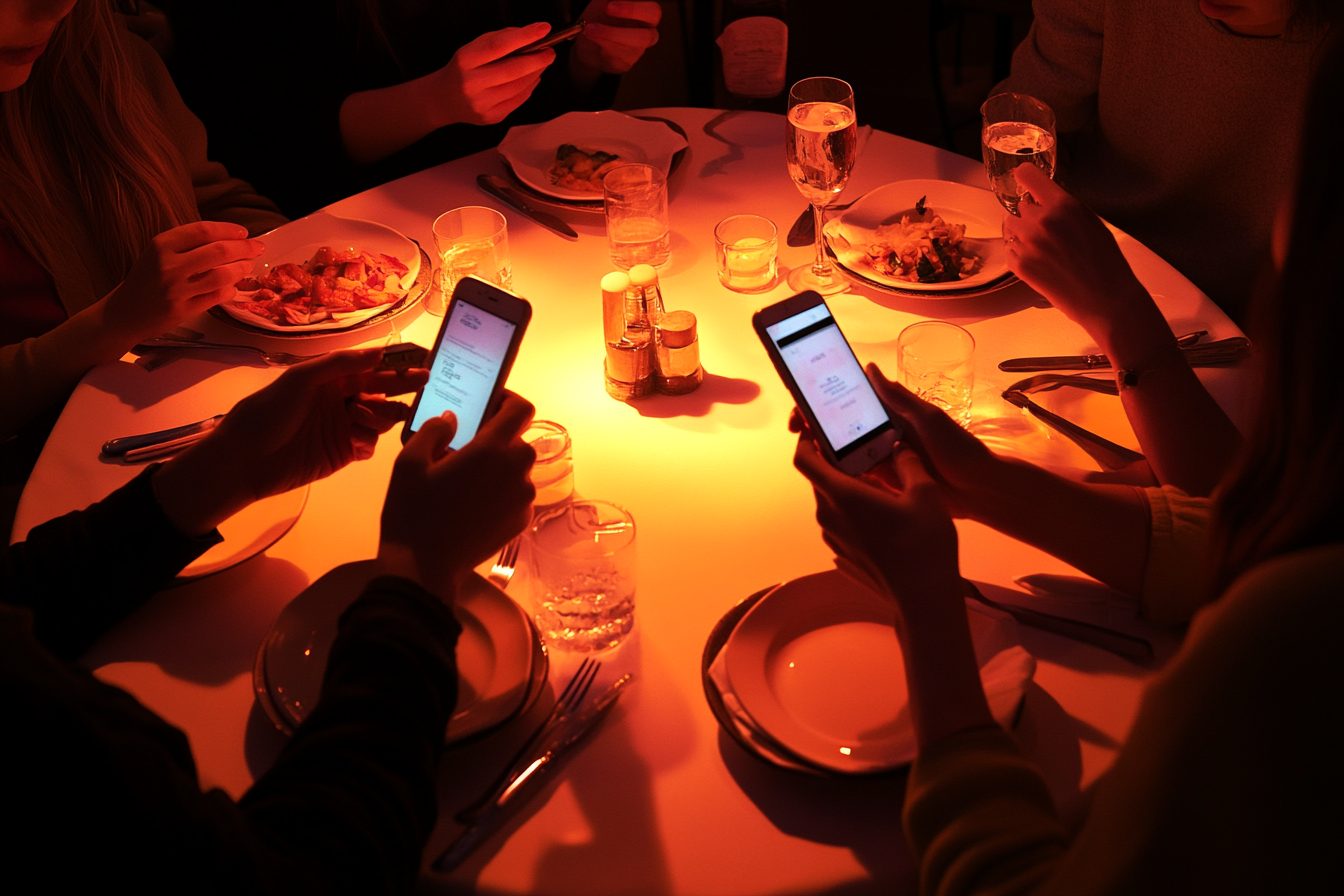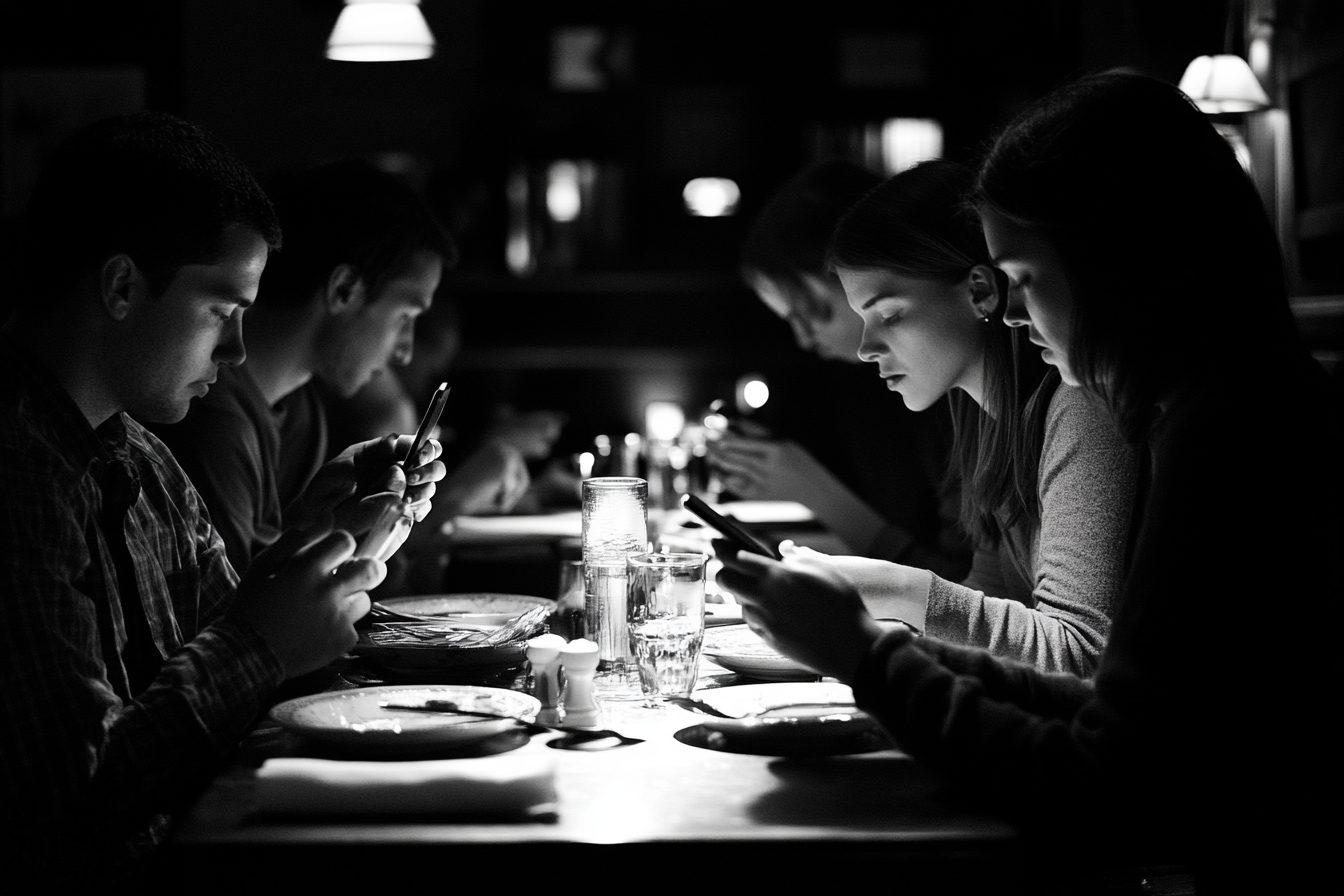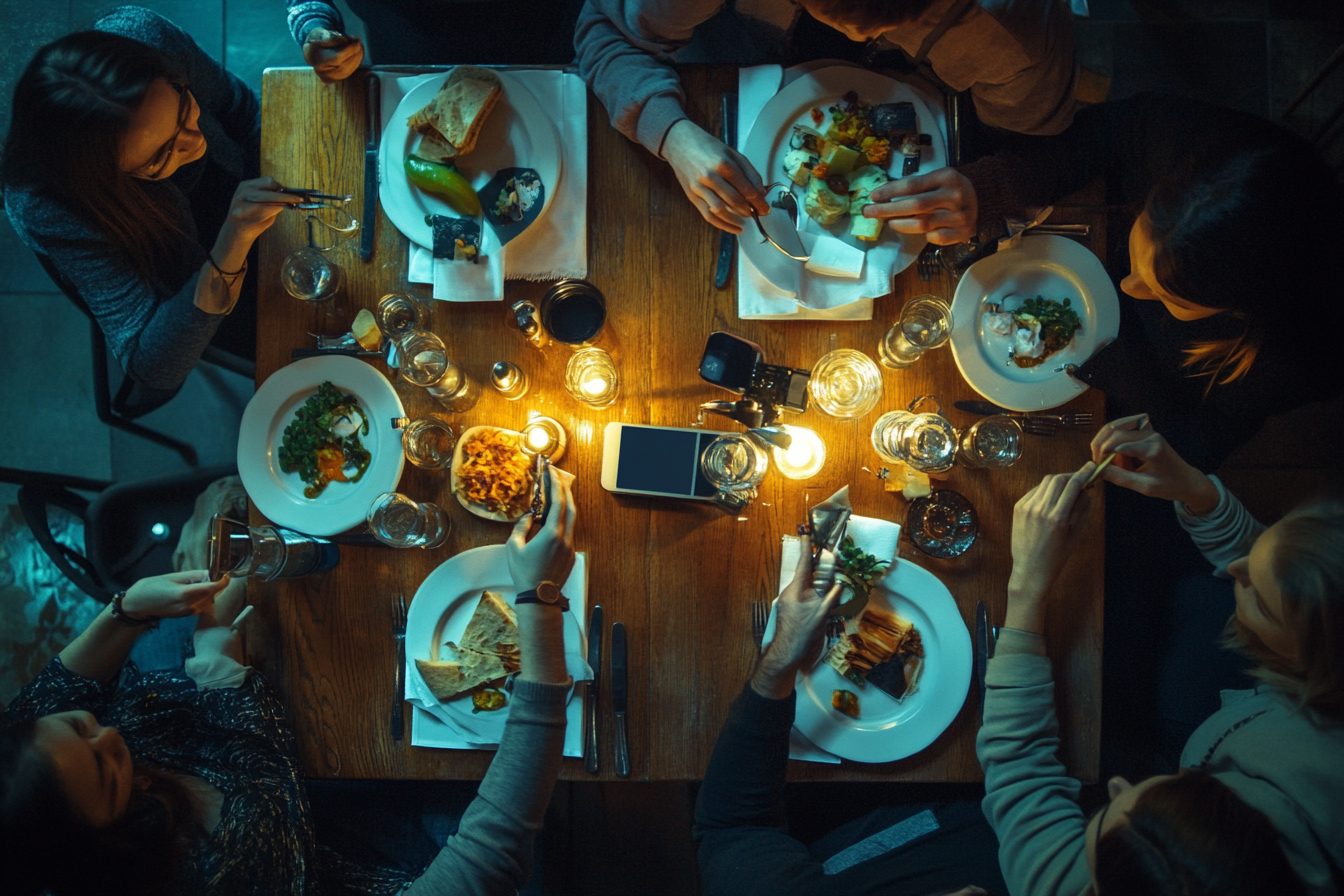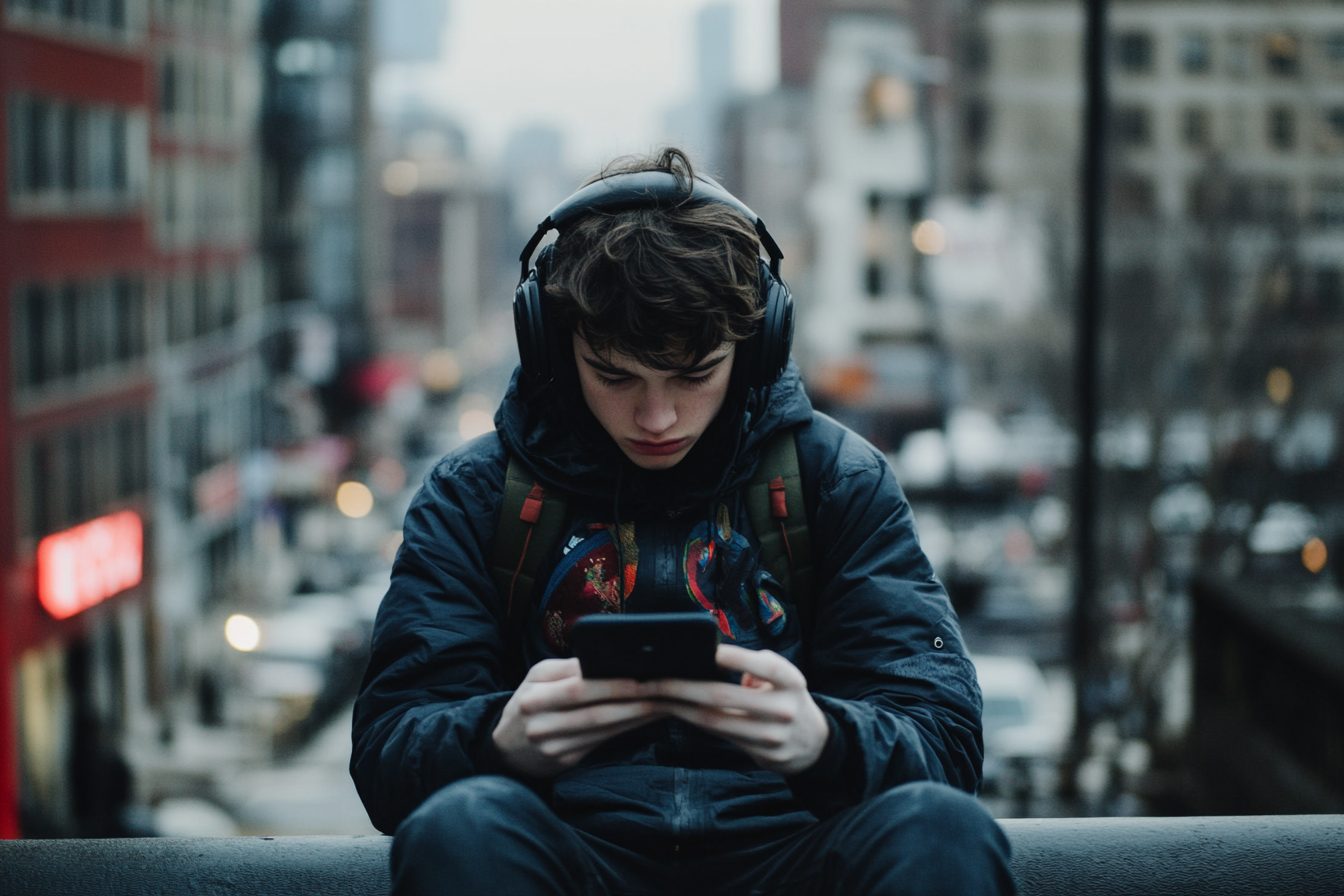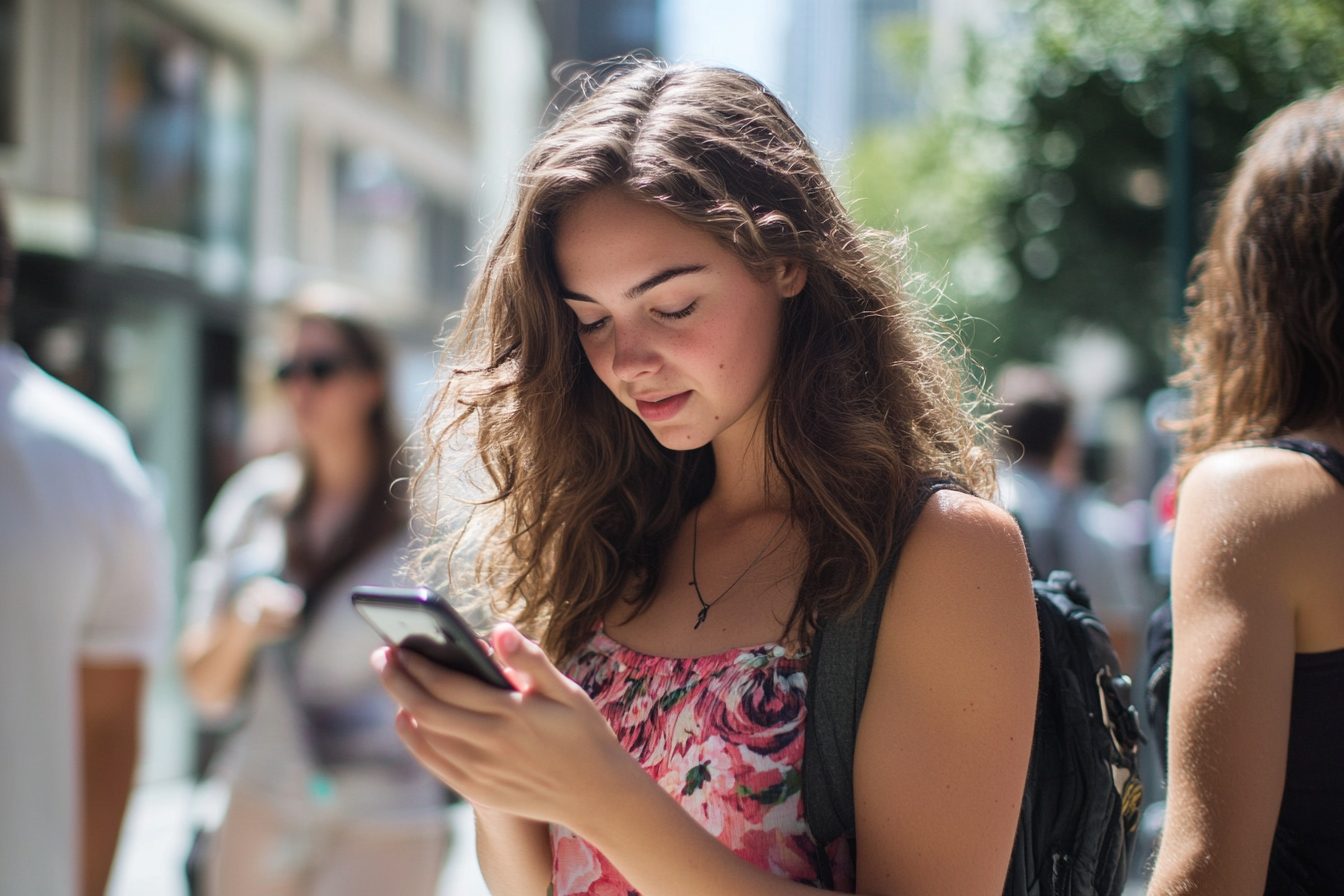The search began with a dinner observation that my wife and I shouldn’t have paid any special attention to. An expensive restaurant at which we were celebrating our anniversary was inhabited by another couple that looked like they were about our age and had in front of them sumptuous meals that seemed more like pictures on Instagram than actual food. Captivating wines and deliciously smelling meals were served, but the couple only spoke to one another and I believe we can all agree that conversations are becoming more and more of a rarity, especially in public. And what struck me even more with a hint of astonishment was that their mobile phones were nowhere to be seen. There were no breaks to mark the arrival of each meticulously arranged dish. No automatic scrolling was observed during pauses in conversations. Simply two individuals, fully immersed in the moment and without the burden of technology.
The search for appropriate restaurants has left me captivated for the last 6 months, with this pondering: are there still restaurants where technology is not predominant within the dining experience? Where human communication has not been reduced to short pauses between scrolling cursed sessions. I seek establishments where these captivating interactions—the ones that allow attention to oneself rather than the virtual world—still occur.
This contradiction is not lost on me. I spent 15 years as a user experience designer for one of the largest tech corporations in the world. I was, in fact, responsible for the implementation of various modern day distractions that emerge during meal times. I designed state-of-the-art notification systems that single-handedly hijacked users out of social environments during moments of lull inactivity. I streamlined user interfaces with the sole purpose of maximizing “engagement time,” without considering the emotional and social well-being of users post-constant engagement.
My initial strategy in search of phone-free dining was to look for restaurants with explicit no-phone policies. I quickly found that such restaurants were surprisingly rare. Most establishments were reluctant to alienate potential customers due to restrictions on their devices. The few exceptions tended toward the extremely high-end, where phone bans were more about showing off exclusivity than genuine wellbeing initiatives. Apparently, when part of the premium experience involves lavish multi-course meals that cost the equivalent of a car payment, the wealthy are able to pause digital engagement for a brief moment.
Then, I focused on restaurants that printed structural barriers to phone use like poor cell reception or lack of public Wi-Fi. Some of these hurdles proved beneficial, but not to the extent that enabled freedom for all devices. Basements speak-easies and some rural establishments had natural challenges to device usage due to their location. This strategy was based less on personal choice and more on a lack of options – the equivalent of a blocking television remote instead of choosing to switch off the screen.
The pivotal moment for me came when I changed my attention from policies to design factors. I began to pay attention to some environmental elements that used to encourage and discourage phone usage during meals. Restaurants with dim lighting tended to further reduce screen checking as phones became less accessible from a visual standpoint.
Those venues where the physical space was captivating also tended to have striking architecture, art installations, and even performance elements. Such features tended to draw attention away from the numerous devices and towards engagement with other people. Equally important was the design of the conversations themselves. Conversations around round tables were more engaging compared to rectangular ones. Dinosaurs seated that, through some miraculously sophisticated arrangement, made them to face each other instead of side by side boosted interpersonal interactions significantly.
Hot background music also blended well significantly enough to enhance sustained dialogue. Most of the successful establishments also shared one point: created psychologic flow states in their clients. The restaurants also managed to keep the diners away from phones. Synchronized theatrical display and interactive dining together with sensory immersion were well executed. Everything was tailored to prioritize the experience of the immediate physical setting over whichever out-of-sight distractions lay on digital devices.
For six months, I have been documenting the nuanced design features of dozens of restaurants in nine different cities. I have captured patterns of phone usage, conversation length, and the surrounding context. I have met with restaurant owners to understand their strategies concerning the digital conundrum of modern dining. The conclusions I reached are simultaneously hopeful and unsettling—a complex reality of devices having completely transformed one of the most basic human social routines while, on the other hand, the restorative power of good design and thoughtful attention reveals what is possible beyond the digital.
By far the most devastating trend I noticed was what I have termed the ‘thirty-second rule.’ In almost every establishment that lacked specific phone blockers, diners with phones on the table would check them, on average, bypassing checks every thirty seconds during conversation pauses. The mere presence of phones drew constant attention, fragmenting gaze and drawing visible glances that lasted far too long, three to fifteen seconds, to garner any substantial redemption.
What transpired when one companion at the table left, even for a minute, was even more revealing. During the pre-smartphone days, this offered an opportunity for light reflection or quiet contemplation. Now, it demands instantaneous phone retrieval, bordering on instinctive behavior. From numerous observations, the average time between a diner companion leaving the table and a fellow diner reaching for a phone is about 2.7 seconds. We no longer have the ability to coexist in public spaces without glued attention to screens – a profound change in behavior that has transpired in under 15 years.
In equally revealing ways, the withdrawal symptoms displayed by people in environments where phones are discouraged were just as fascinating. As a result, restaurants with enforced “check your phone at the door” rules or phone-lock pouches tend to attract more guests displaying classic signs of dependency disruption. This includes increased fidgeting, looking toward pockets where phones would typically reside, looking toward or near where the phones would be, being visibly irritable or anxious – all indicative of behavioral and substance withdrawal.
I experienced these responses in myself and those around me. While eating at an isolated mountain restaurant that lacked cell service, I noted how my focus was drifting towards my phone. My fingers grasped for it during lulls in the chat, and a part of me was stuck thinking about the many messages I could be missing. Although my rational brain grasped that nothing life-changing was waiting for me, some rewired part of my neural circuitry continued seeking the familiar dopamine hit of digital connection.
The team working with devices with imposed restrictions had strikingly similar feedback. One head waiter working at a fancy restaurant in DC said: “Guests have a tough time for the first twenty minutes. They are anxious and preoccupied with checking their phones. After that threshold, something shifts. Conversations deepen. Eye contact becomes common. Meal periods are longer. And here’s the interesting part—instead of the hitherto observed lower levels, guests feedback much higher levels of satisfaction with both the meal, and the experience.”
A chef in Chicago who implemented phone-free Sundays told me: “We notice significant differences in body language. On phone-free nights, customers are more likely to lean towards one another as they talk. There are higher levels of laughter, higher levels of eye engagement. The time taken to complete an average meal increases by 23 minutes, and the frequency of our dessert orders increases by almost 30%. Because people do not hurry to check their phones, they realize that they are still hungry for something sweet, and that makes them less likely to rush back to their phones.”
All of these findings support phone use restrictions. Research has repeatedly demonstrated that talking while handicapped and not possessing basic electronics like phones leads to better attention and social bonds being formed. Phones, both active and inactive, lower the quality of conversation, expression of empathy, and connection between individuals. People meeting in person are terrible multitaskers, and while we know that monitoring phones alerts signals while trying to hold a feeling conversation is virtually impossible, we are unreasonably convinced that it can be done.
My search for an eatery with no-phones-allowed option led me to a rather unexpected revelation – it turns out that having the right intention rather than an establishment is what truly matters. The most profound moments of phone-less dining I’ve experienced were when my companions and I arrived at an agreement regarding device usage unlike waiting for external policies and environmental nudges.
Finding phone-free zones have proved to be the most successful method, and embarrassingly so: smart phones are to be kept in a pocket or purse. Placing the devices in a stack at the edge of the table works too, but not as perfectly. If a person tries to reach for their device before the meal comes to its natural conclusion, they are expected to cover the entire bill. The expense-oriented regulation humorously manages to provoke just enough friction to mindless phone scrolling without enforcing strict disconnection.
Even participants who furiously disagree with the suggestions are appreciative of the imposed interventions. “Every meal, I feel the need to disengage. Somehow I’m struggling to cram my life – separately because it’s much better away from the table,” said one apprehensive participant. “It’s regrettable we set borders in requirement for doing what we all know should be common sense,” said another while rolling their eyes and appearing utterly confused. Value perception is where all three differ in thinking. As different smartphone users, all participants autonomously agree that an attempt to appease anticipated digital cravings should never take over face to face interactions.
The holy grail isn’t a phone-free restaurant, I’ve come to realize, but fostering the conditions for presence, regardless of the venue. Perhaps it means sitting in places where televisions are not directly visible, requesting tables that support a reasonable level of conversation, or making prior agreements about devices well before the meal commences. While these choices may appear trivial, they profoundly affect whether eating together transcends into a social activity, or remains socially blunt.
I still document restaurants that are designed with attention in mind, but shift to the more fundamental problem of how to achieve device-free dining instead of now ask how to “bring more presence to every meal,” even at home. From my perspective: this is more honest, especially considering I helped deploy the notification systems that now wake millions from mealtime slogs forwards interspersed monologues nightly.
Last week, I revisited the anniversary restaurant where our journey began. Nearby, I noticed a table with four young adults who, as I imagined, were friends out to share a meal. The four of them were deeply focused on their phones, with their heads buried most of the time, looking up only to show or share brief comments before going back to solo scrolling. From their perspective, they weren’t being rude; I think it would be fair to say that within their cohort, this phone-based interaction is viewed as “getting together.” All of this is a reality for a generation that has never encountered adult socializing without smartphones.
As I observed them, I began to feel a nuanced feeling. It wasn’t judgment or, in this case, even rage, but an acknowledgment of how everything about us has shifted in unimaginably abnormal ways regarding human interaction. In my case, up to a certain point, one could say that I remember a time when socializing meant something different than pre smartphones interaction. But like everyone else, my generation has adapted just as completely to its rhythms and restrictions. I don’t claim to speak on behalf of my peers, but I have come to learn that social devices I helped develop have drastically changed one of the oldest social customs in the world, sometimes without our explicit understanding or agreement.Unbeknownst to us, the ideal phone-less restaurant isn’t a location but rather a “practice” – the phone-less setting of presencing over connectivity, attention over distraction, and the person across you instead of the world web. That practice exists for all of us at every meal and anywhere regardless of the venue. Therefore, we simply must bear the initial discomfort of lack of connection long enough to unearth the sheer joy that comes from not having dividied attention, which happens to be a basic human instinct we all shared before we contributed towards creating a world void of such experiences.
